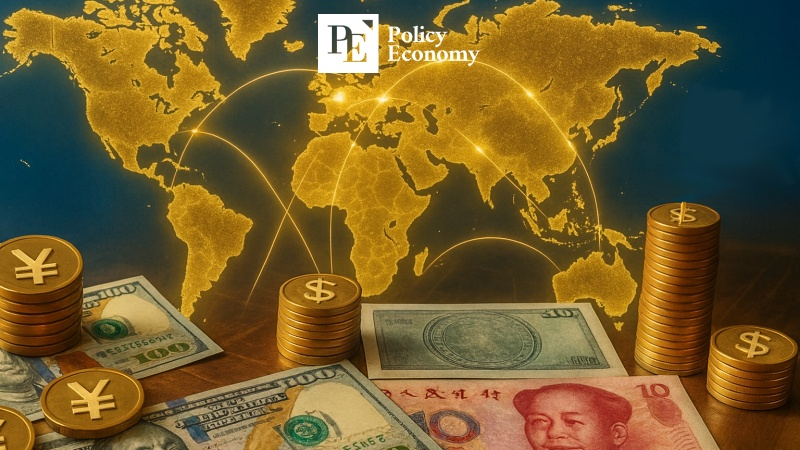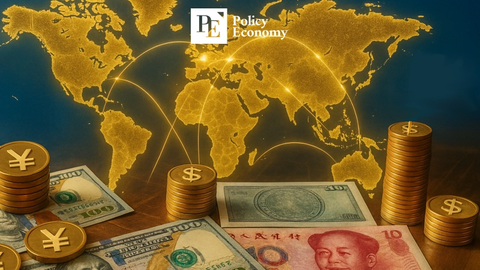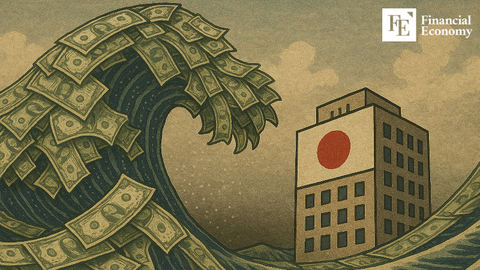China Channels Funds Into “Yuan Shield” Stablecoins as Counteroffensive Against Dollar Dominance
Input
Changed
Policy proposals backed with funding
Anxieties over yuan and euro sovereignty
Dollar’s influence expands across Latin America

China is pouring significant funds into research on stablecoins and cross-border monitoring systems, accelerating discussions on yuan-linked tokens. The move is widely seen as a response to the U.S. Genius Act, which formalized dollar-backed stablecoins and solidified their revenue structures. Europe has also advanced its own regulatory framework for digital assets in a bid to defend monetary sovereignty. But anxiety persists that dollar supremacy is deepening, as dollar-pegged stablecoins increasingly function as public infrastructure substitutes in fragile economies, spreading rapidly as a lifeline against inflation and costly remittances.
“Innovation within limits”
According to the South China Morning Post on September 10, the National Natural Science Foundation of China (NSFC), the country’s largest state-backed research funding body, has begun accepting proposals on stablecoins and cross-border monitoring systems. Applicants must include policy recommendations addressing risks posed by global stablecoins, with successful projects eligible for grants of up to USD 42,000.
In its call for proposals, NSFC warned that “hidden circulation of private stablecoins may undermine the effectiveness of capital controls” and cautioned that the expansion of dollar-pegged tokens “poses a potential challenge to the yuan.” The language underscores Beijing’s view of stablecoins not as a technical issue but as a financial security concern.
China banned cryptocurrency trading in 2021, maintaining a hardline stance. But as the global regulatory landscape shifts, Beijing has been forced to respond strategically. After U.S. President Donald Trump signed the Genius Act in July, formally integrating stablecoins into the financial system, Hong Kong enacted its own stablecoin ordinance in August. NSFC’s new funding push marks China’s first institutional step to reinforce this policy shift.
Critics warn that yuan-backed stablecoins could expose structural contradictions: while they may strengthen China’s role in the global currency rivalry, they also risk weakening the country’s capital controls. Still, Beijing appears determined to press ahead, framing its approach as “financial innovation within limits.”

Formalizing digital assets worldwide
The backdrop to China’s pivot is the surging adoption of dollar stablecoins. The Genius Act imposes detailed requirements on issuers, including registration, reserve composition, and redemption procedures, boosting their institutional credibility. Most reserves are concentrated in short-term U.S. Treasuries, directly reinforcing global dollar demand—a dynamic likened to the “petrodollar” of the 1970s, when oil settlement entrenched dollar supremacy. Stablecoins could now serve as a new anchor of U.S. monetary power.
This prospect has heightened concerns in both China and Europe. If dollar-based stablecoins become the global settlement norm, local currency sovereignty could erode. The Korea Institute of Finance noted that the Genius Act would open the sector to major banks and institutional investors, sharply increasing dollar-token circulation. Hyun Song Shin, economic adviser at the Bank for International Settlements, similarly warned: “Even if national stablecoins are introduced, demand for dollar stablecoins will persist.”
China has moved quickly. Hong Kong’s Monetary Authority is accepting license applications for fiat-backed tokens, with the first batch expected early next year. While Beijing continues to ban crypto trading on the mainland, it is cautiously opening the door to yuan-pegged stablecoins—a strategy to preserve capital controls while countering dollar dominance.
Europe is also moving. The EU has rolled out the world’s most comprehensive crypto framework, the Markets in Crypto-Assets Regulation (MiCA), requiring 100% reserve backing, immediate redemption, and placing large issuers under direct European Banking Authority supervision. The European Investment Bank has already tested euro stablecoins for digital bond issuance as part of efforts to reinforce European monetary sovereignty.
Dollar stablecoins gaining ground
Meanwhile, dollar-backed stablecoins are spreading rapidly, particularly in Latin America. Venezuela, where decades of populism and hyperinflation devastated the local currency, is a telling case. The United Nations Development Programme has launched the “Stablecoin Platform Operation (SPO) Project” to deliver aid in the form of dollar-pegged tokens instead of local currency, highlighting their role as substitutes for public financial infrastructure.
Global figures underscore this momentum. The Council on International Financial Cooperation under South Korea’s Financial Services Commission reported that worldwide stablecoin transaction volume reached USD 27 trillion last year—nearly triple Mastercard’s USD 8 trillion settlement volume. The average stablecoin transaction size was USD 21,600, compared to USD 50 for Mastercard, showing their dominance in large-scale institutional and high-value transactions.
While the U.S. and emerging markets use them differently, the effect is the same: reinforcing the dollar’s reach. Washington has limited stablecoins’ appeal to retail users by banning interest payments but has tied issuers’ reserves to Treasuries and bank deposits, while offering yield opportunities to institutional investors. In parallel, emerging economies across Latin America and Africa are embracing them as shields against inflation, currency volatility, and remittance costs. Analysts say the trend is clear: “Dollar stablecoins are using Latin America as a launchpad to expand across Asia and Africa.”






















Comment